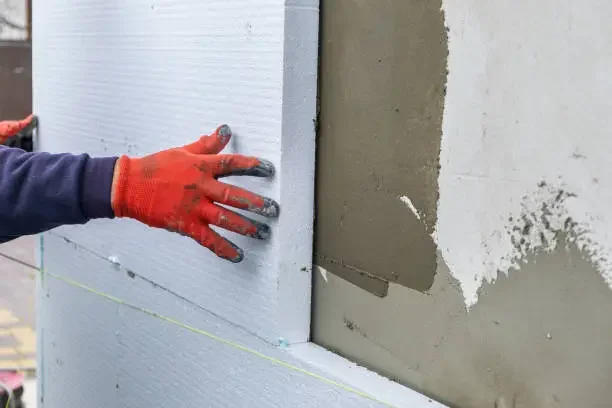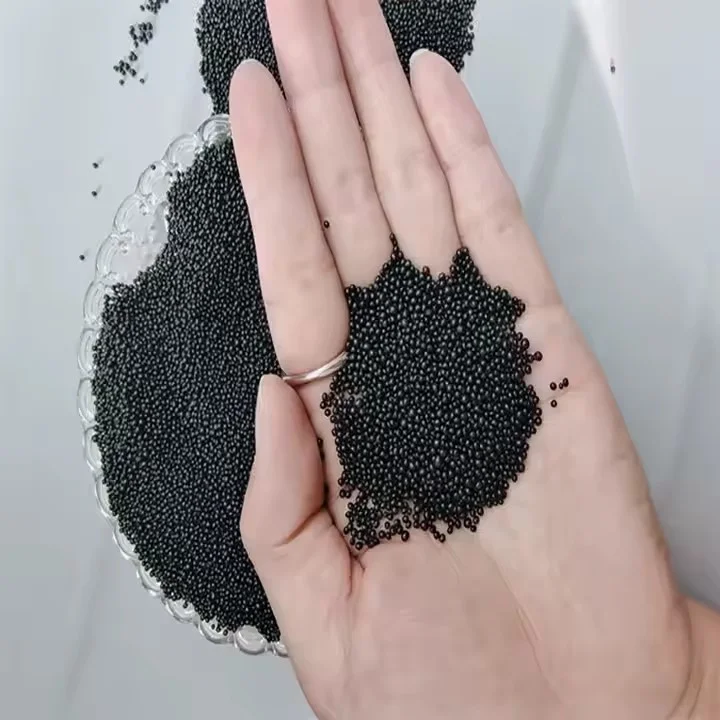Keeping homes and offices cozy in winter and cool in summer can be tricky. Expanded Polystyrene (EPS) boards are a solid pick for insulation. They cut down on energy bills, are simple to work with, and won’t break the bank. This piece dives into how EPS boards do their job, what makes them awesome for construction, and how HUASHENG, a reliable EPS maker, delivers high-quality stuff to keep your projects energy-smart and green.

EPS Boards in Thermal Insulation
When you plan a building that saves energy, picking the right insulation is super important. EPS boards are a popular choice because they keep heat in or out very well, are light to carry, and don’t break the bank. These boards are made to slow down heat movement. This makes buildings more comfortable and efficient. They work great for homes, offices, or even big projects.
If you need a dependable EPS manufacturer with a solid history of making great insulation, check out HUASHENG. With decades of experience in EPS production, HUASHENG delivers customized solutions for diverse construction needs. Their commitment to innovation, quality control, and sustainability makes them a preferred partner across global markets. Whether you’re working on new builds or retrofits, HUASHENG offers technical support and product consistency that help you meet stringent energy codes without compromise.
Composition and Structure of EPS Boards
EPS boards are made of 98% air and 2% polystyrene, which is turned into a hard foam. This special closed-cell design is key to how well it insulates. Each tiny bead in the board traps air in small pockets. These pockets block heat from moving through.
The foam’s structure keeps it strong and steady, even when the weather changes. This means EPS boards stay reliable for a long time. They’re perfect for building walls, roofs, or floors where you need insulation that lasts.
Thermal Conductivity Properties of EPS
The thermal conductivity, or lambda value, of EPS boards is usually between 0.030 and 0.038 W/m·K. This depends on how dense the board is and how it’s made. A lower lambda value means better insulation.
For even better results, you can pick advanced options like Graphite Grade – S – Flame-Retardant Panels. These have tiny graphite bits that bounce heat away. This boosts energy savings without needing thicker boards. It’s a great choice when you need to meet strict energy rules but have limited space.

Comparison with Other Insulation Materials
Compared to materials like mineral wool or polyurethane foam, EPS boards give you a nice mix of low cost, easy setup, and resistance to water. Polyurethane might insulate a bit better per inch, but it’s pricier. Plus, it can be trickier to install.
EPS boards are super light, so they’re easy to move and put in place. You don’t need fancy tools, which saves time and money on the job site. This makes EPS a practical pick for many projects.
Mechanisms of Thermal Resistance in EPS Boards
To understand why EPS boards save energy, let’s look at how they stop heat from moving.
Heat Transfer Reduction through Closed-Cell Structure
The closed-cell design in EPS stops air from moving inside the board. This cuts down on heat moving through conduction and convection. Each tiny cell acts like a shield against temperature changes. Together, they create a strong barrier that keeps working well, even in very hot, cold, or wet places.
Role of Air Entrapment in Minimizing Heat Flow
Air is a great insulator when it’s stuck in tiny pockets, like in EPS beads. These small air cells slow down heat by making it hard for warmth to pass through. This setup gives EPS boards high R-values without being too heavy. It’s a smart choice when you need insulation but don’t want extra weight in your building design.
Performance in Various Building Applications
EPS boards are flexible and can be used in many parts of a building, from walls to floors, keeping heat where it belongs.
External Wall Insulation Systems
In external wall insulation (EWI) systems, EPS boards are the main layer to keep heat in. They go over brick or concrete walls before adding finishes like plaster or siding. Their light weight doesn’t add much stress to the building. They also make walls look better while saving energy.
Using advanced options like Graphite Grade – S – Flame-Retardant Panels adds fire safety benefits without compromising insulation value—an important consideration for multi-story buildings or urban developments subject to stringent fire codes.
Roofing and Floor Insulation
In roofs, whether flat or sloped, EPS boards are tough enough to handle the weight from things like air conditioners or people walking during repairs. They still keep insulating well.
For floors, especially ones built on the ground, EPS stops heat from escaping or coming in from the soil. It’s strong enough to hold up heavy floors above it. Plus, it resists water, so it stays durable even in damp spots under barriers that keep moisture out.
Energy Efficiency Benefits in Building Envelopes
The big goal of using EPS insulation is to cut down on energy use. This saves money on heating and cooling bills all year long.
Reducing Heating and Cooling Demand with EPS Boards
EPS boards stop heat from leaking through walls, roofs, or floors. This keeps indoor temperatures steady. It means you don’t need to run heaters or air conditioners as much. This saves money on energy bills and cuts down on harmful gases from power plants.
Even small improvements in insulation can add up to big savings over time. Choosing the right EPS thickness for your area’s weather and building type makes a huge difference.
Contribution to Passive House and Low-Energy Buildings
EPS boards are a key part of super energy-efficient buildings, like those meeting passive house standards. They work well with tight seals and good air flow systems. This creates buildings that need very little heating or cooling most of the time.
Whether you’re aiming for a Net Zero Energy building or trying to earn green building points, EPS boards give you clear, science-backed results to hit your goals.
Regulatory Compliance and Sustainability Aspects
Choosing insulation isn’t just about performance. It also has to meet energy and eco-friendly rules. EPS boards from HUASHENG shine in these areas.
Meeting Global and Regional Energy Codes with HUASHENG EPS
HUASHENG products follow strict global standards, like EN13163 for EPS insulation. This means they work for building codes in places like Europe, Asia, North America, and more. You can trust them during inspections or green building reviews.
Their detailed test data helps you plan projects accurately. You can predict how the insulation will work in real life, based on solid lab results, not guesses.
Environmental Impact and Recyclability of HUASHENG Products
EPS can be fully recycled at the end of its life. It’s broken down and reused to make new products, which cuts down on waste. HUASHENG uses clean manufacturing methods that produce fewer harmful emissions. This fits with the eco-friendly goals of builders and designers.
By picking HUASHENG’s responsibly made EPS, you help the environment while keeping your project’s performance strong. It’s a great choice for both your budget and the planet.
Recommendations for Optimal Use of HUASHENG EPS Boards
To get the most out of HUASHENG EPS boards, follow these simple tips for choosing and installing them.
Choosing the Right Thickness for Target U-Values
Different places need different levels of insulation based on the weather. Pick the right EPS board thickness to meet local rules without wasting material. Check HUASHENG’s product guides to find the best setup for your walls, roofs, or floors.
Using high-performance options like Graphite Grade – S – Flame-Retardant Panels lets you use thinner boards while still hitting great energy targets. This is handy when space is tight in walls or facades.
Installation Best Practices for Maximized Thermal Efficiency
Fit EPS boards tightly together, using their interlocking edges if they have them. This stops heat from sneaking through gaps. Use the right glues or fasteners, HUASHENG suggests to keep boards strong over time.
Keep boards safe from damage during transport or storage. This ensures they work as expected once installed.
FAQ
Q: Can I use standard white EPS instead of graphite-enhanced panels?
A: Yes, standard white EPS works fine. But Graphite Grade – S – Flame-Retardant Panels insulate better with less thickness. They’re perfect when you need to save space while hitting energy goals.
Q: How does moisture affect the insulation value of EPS?
A: The closed-cell design of EPS resists water well in normal conditions. But you need careful setup around holes or edges to keep it working right over time.
Q: Is there an environmental benefit associated with choosing HUASHENG’s products?
A: Yes! HUASHENG uses green manufacturing and makes fully recyclable EPS. This supports eco-friendly building goals worldwide.






